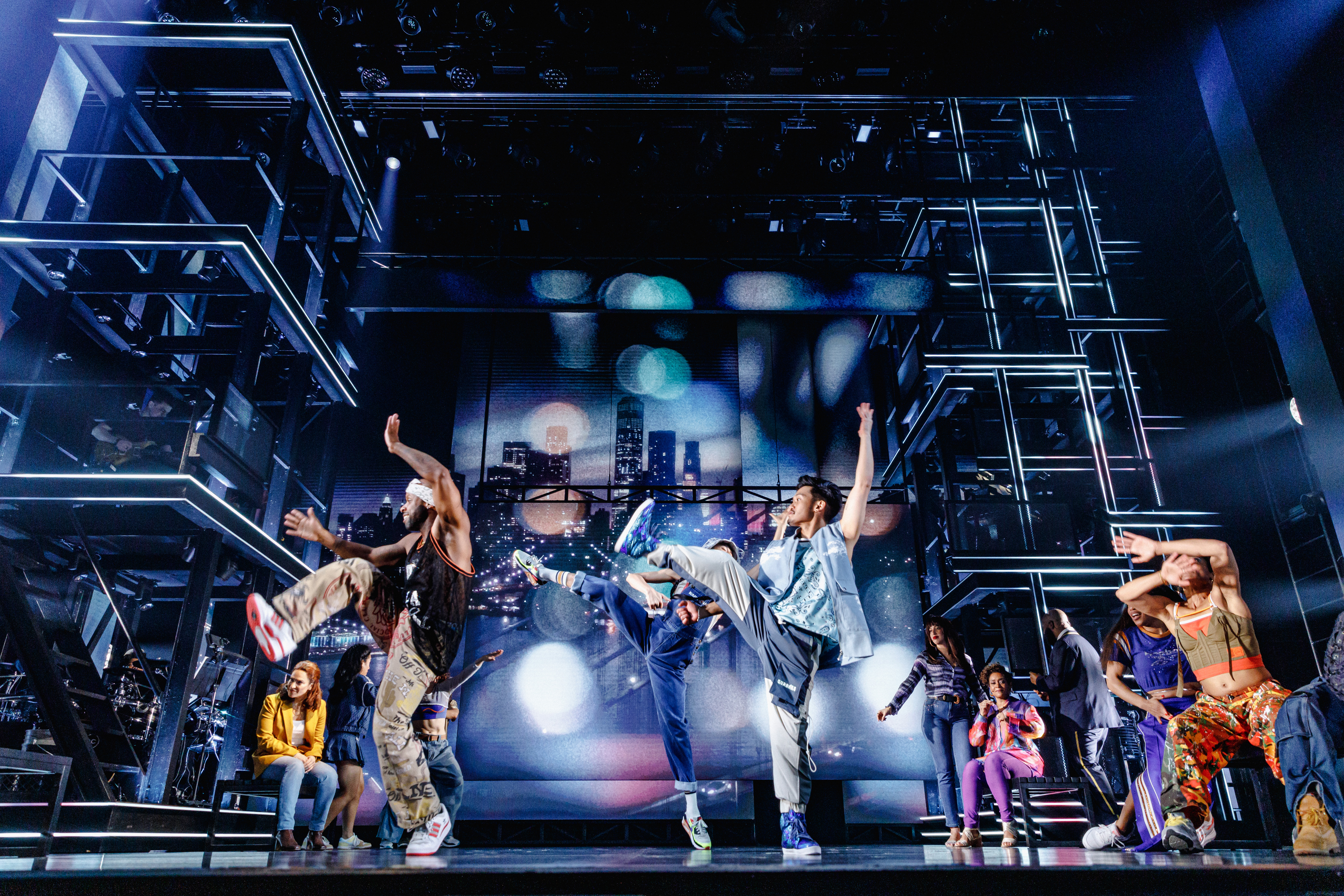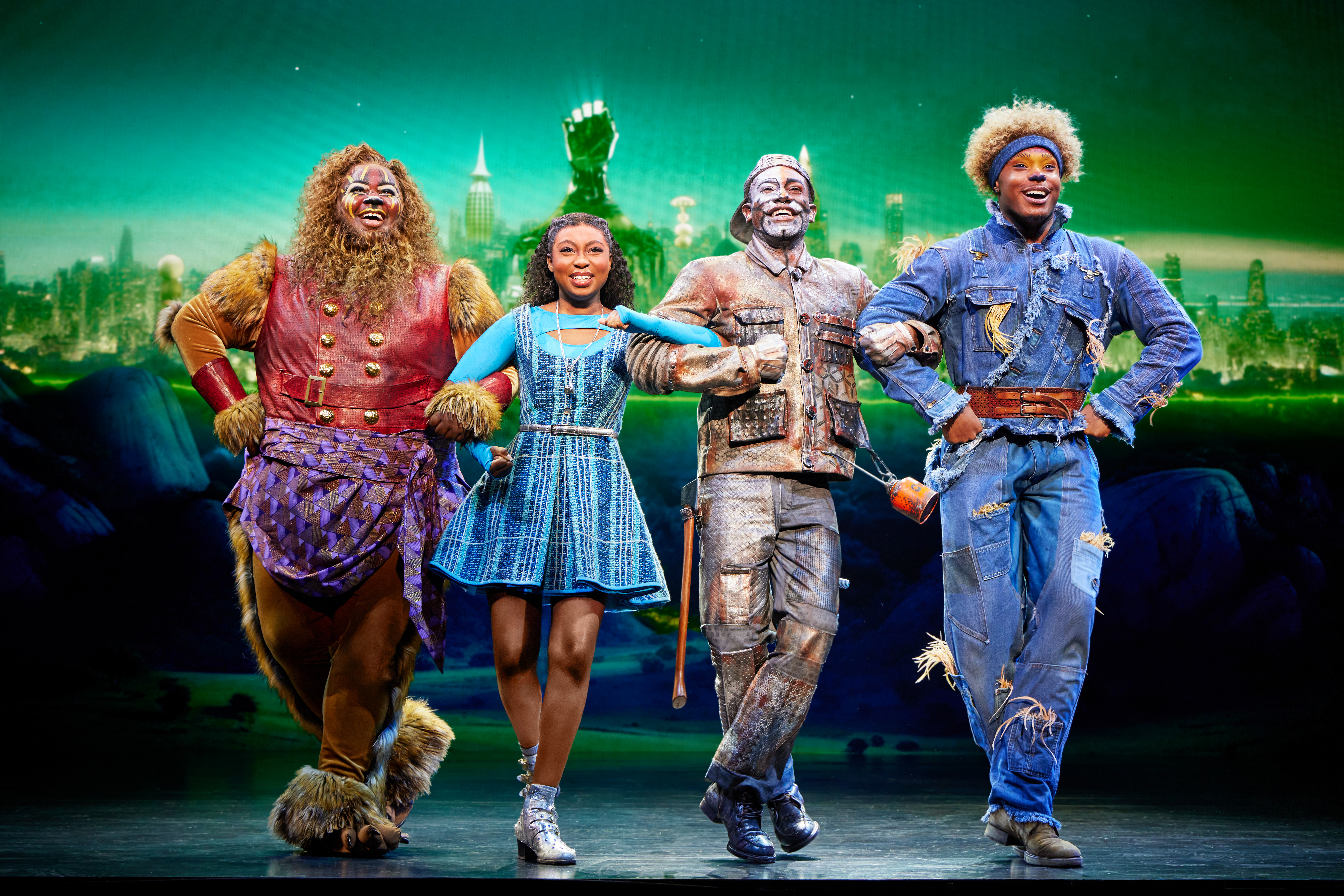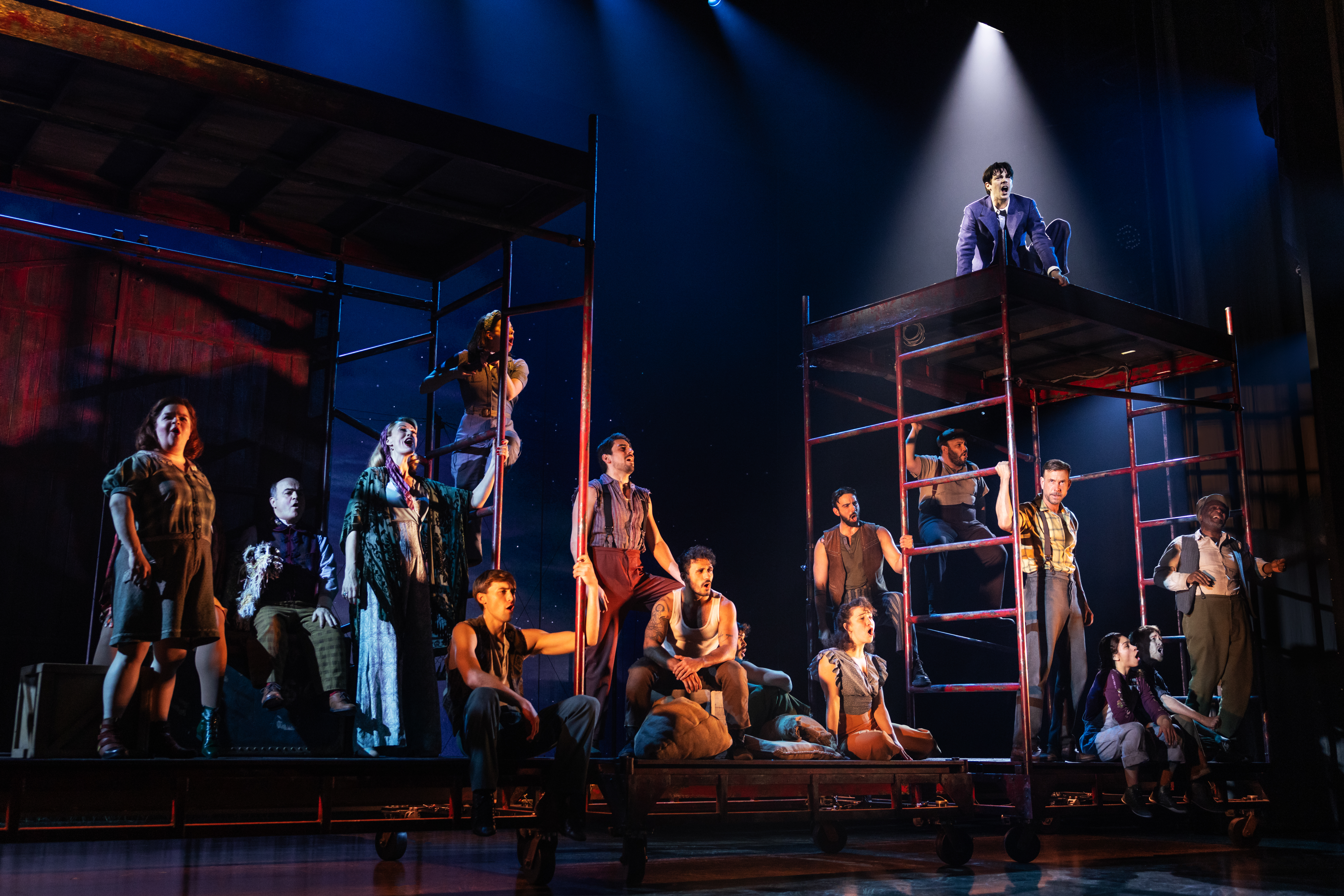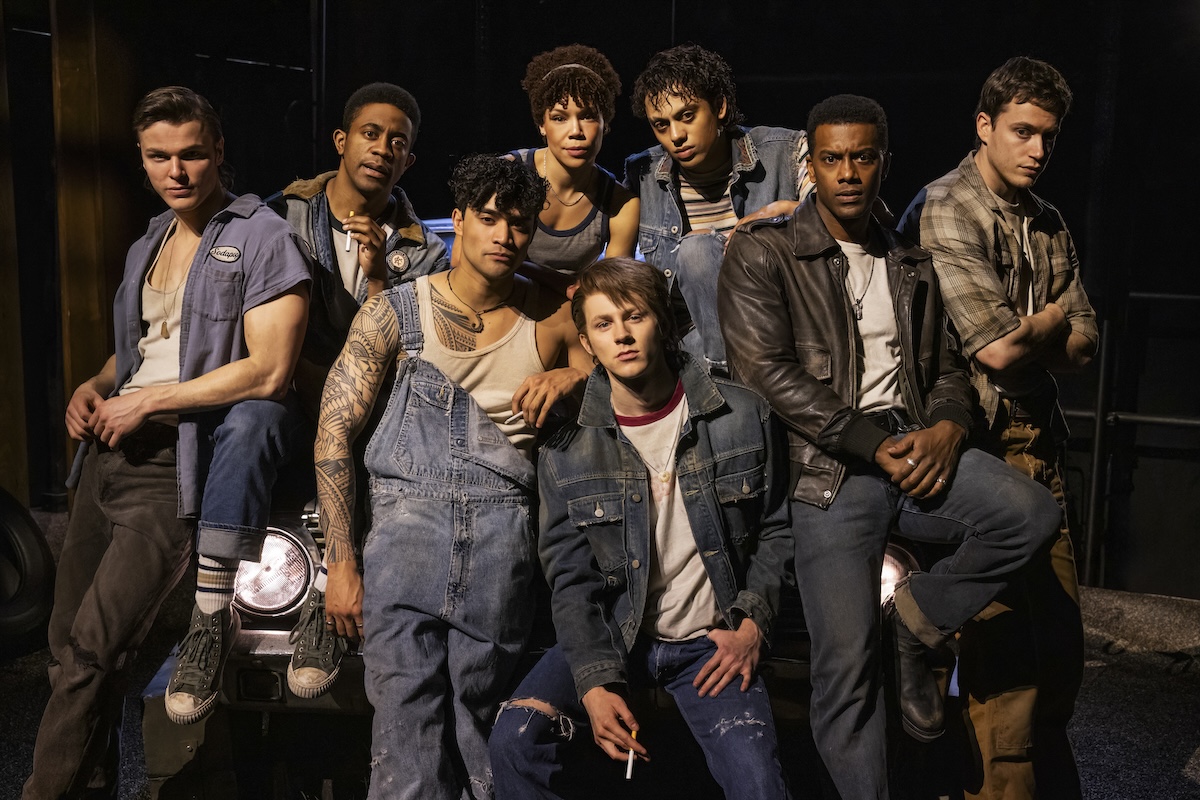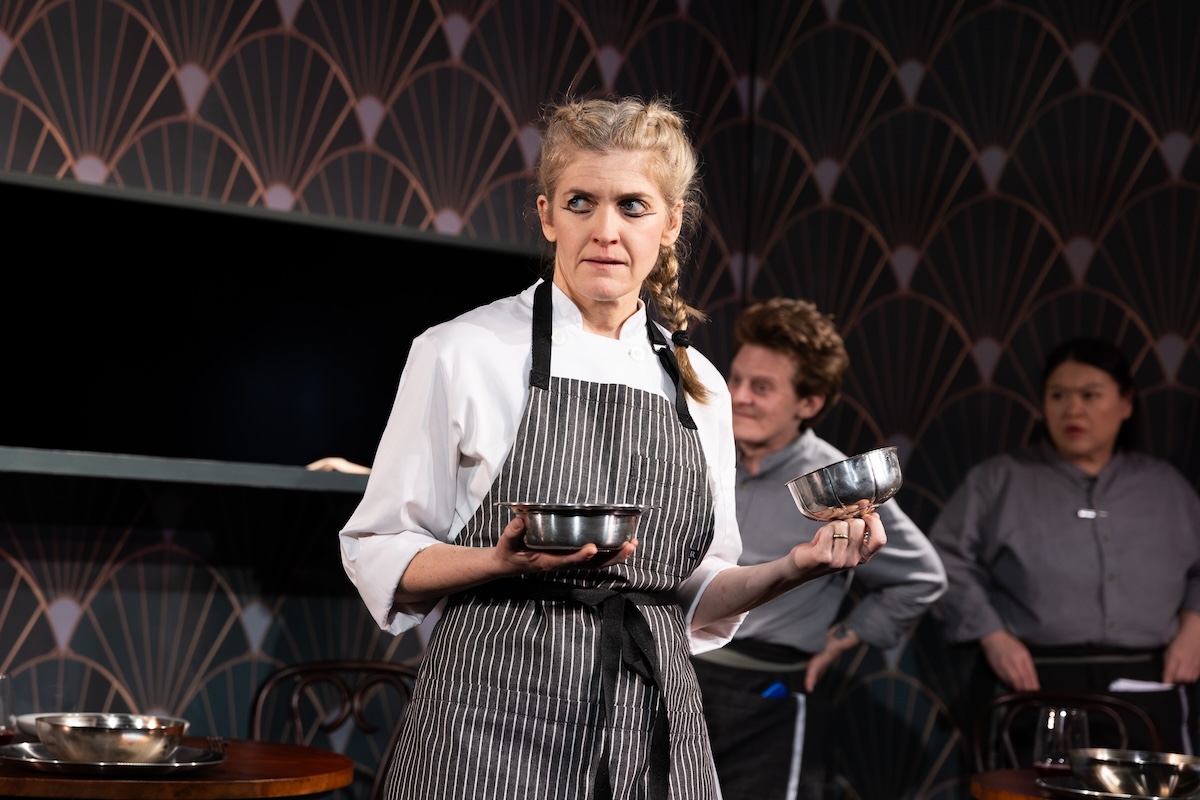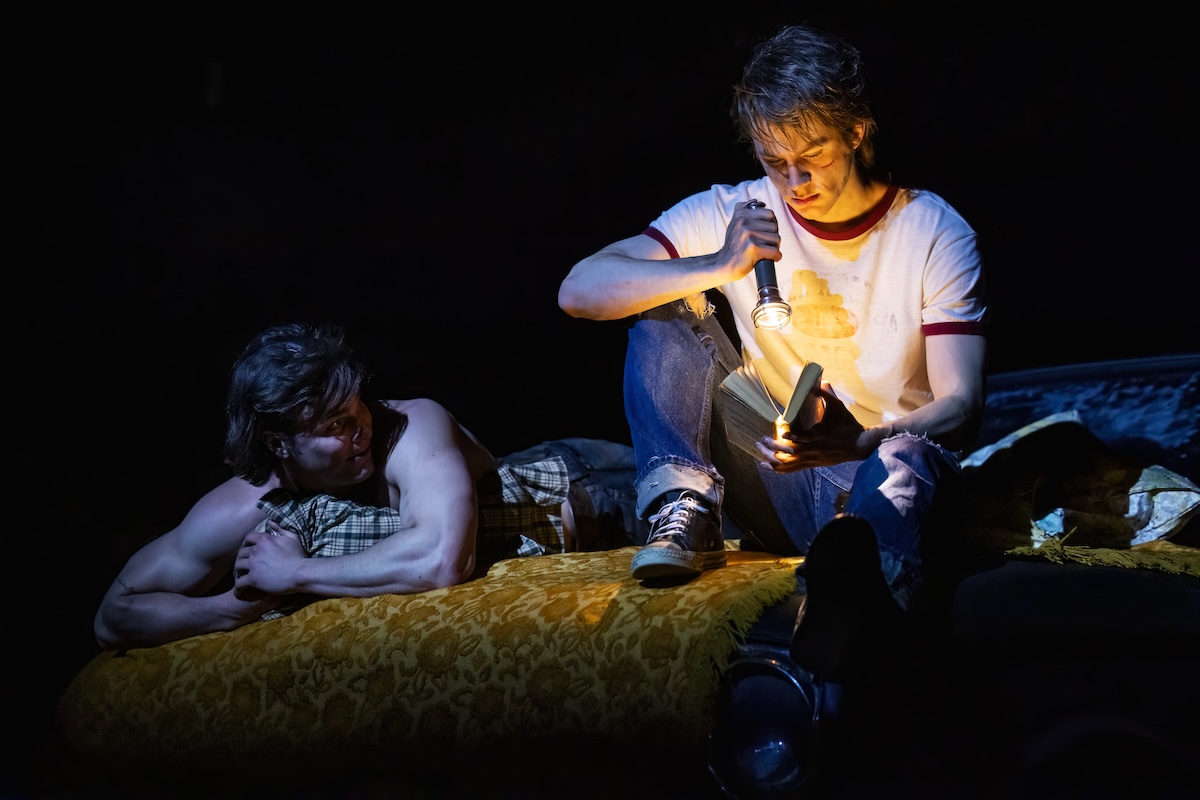Review: Lempicka on Broadway Pays Tribute to a Great But Unknown Artist

(© Matthew Murphy/Evan Zimmerman)
A musical about a mid-20th century female painter you’ve probably never heard of sounds like a hard sell. But the life of artist Tamara de Lempicka makes fascinating fodder for writers Carson Kreitzer (concept, book, and lyrics) and Matt Gould (music/book). Tamara (Eden Espinosa) fled Bolshevik Russia for Paris and became one of the most renowned Art Deco painters of her time, while simultaneously making waves for her various bisexual extramarital affairs. Lempicka, at the Longacre Theatre, is branded as the story of a woman “between two wars, between two lovers.”
Perhaps a more precise phrase would be “between two epochs,” since she lived and produced art between two distinct cultural and artistic moments. The musical probes the fleeting artistic notions of taste, of what is fashionable, and how major historical events cause tidal waves of cultural change, which can leave whole artistic movements and individual artists–no matter how acclaimed–behind, forgotten. As she herself says towards the end of the show, “it’s a bitch to outlive your own context.”
In real life, Lempicka’s major achievement was painting sensuous female nudes and active women. She is associated with the New Woman, a figure that the musical argues she didn’t just immortalize but helped paint into existence. The lyrics frequently explore this theme, often repeatedly musing around a string of words like “beautiful” and “paint” and “woman” itself. Song titles include “Woman Is,” “The New Woman,” “Women” (not to mention “I Will Paint Her” and “The Most Beautiful Bracelet.”)
The personal aspects of the story focus on the erotic triangle of Lempicka, her husband (Andrew Samonsky), and her sex worker lover Rafaela (Amber Iman). Across the board, the characters are well-developed, but the historical and political events are the musical’s weakest points. The Russian Revolution in 1917 and the rise of fascism in the 1930s are both collapsed into single songs with oversimplified lyrics and jarring musical intensity (the score itself has some odd moments, notably the act two trio featuring the three leads, which has the sonic quality of a club remix).
Rachel Chavkin, one of musical-theater’s premiere auteur directors, has a supreme talent for elevating good musicals into extraordinary productions (Hadestown right across the street and Great Comet a few years ago). With that in mind, it’s hard not to feel disappointed by her latest creation, which lacks her signature touches. Gone is the cohesive but daring aesthetic, the evocative stage pictures, and the marvelous ensemble work. Riccardo Hernández’s set is a slew of steel girder staircases that evoke the Eiffel Tower. They chop up the space such that Chavkin ends up setting most scenes on a small moving platform. The scaffolding is bizarrely outlined in neon blue lights (the mostly ineffective lighting is by Bradley King), and two screen panels fly in and out, displaying atmospheric projections (by Peter Hylenski and Justin Stasiw) that differentiate locales, but can get heavy-handed.
Regretfully, Paloma Young’s costumes were unsuccessful, too. She pairs period clothes for the lead characters with an ensemble clad in sexy Madonna-does-Lempicka outfits (bustier jumpsuits, corsets tucked into pants, sleeveless muscle shirts, eyeliner, finger waves). The ensemble presents problems for pretty much everyone. Raja Feather Kelly’s choreography for them was confused and disjointed, spanning ballroom partner dance and elegant dips to jerky, TikTok-esque arm movements.
However, the performances from Espinosa and the other principals are so exceptional that they more than make up for it. Espinosa confidently carries this show with the swagger of her character. Her performance spans almost 60 years of Lempicka’s life, and she transforms with admirable ease through her life’s many chapters: demure bride who dabbles in painting, struggling young wife and mother, eager aspiring artist, famed celebrity, forgotten old woman painting in a park. (Score-wise, at times, the incessant belting demanded of Espinosa can feel a bit much.)
She is flanked by a stellar group of actors. The iron-clad Beth Leavel gets an 11 o’clock number that will bring you to tears. The always dependable George Abud manages to overcome a confounding character arc as Italian futurist painter Filippo Marinetti. Iman, effervescent yet biting, has a presence so magnetic she threatens to steal the show with every powerhouse song–which fits, since she is the figure that most haunts Tamara’s life and memory.
Lempicka is an undeniably compelling and original piece of art, unique within a season dominated by musicals based on existing films or musical catalogs. It will be deeply meaningful to those who will find resonance in its various thematic threads, from the struggles of artists and the desire for a legacy, to the precarity of queer people. When Rafaela asks Tamara when they can be openly together, Tamara answers “when the world is not in flames,” to which her lover, exhausted, replies “when will that be?” Lempicka is a perfect musical for our own turbulent times, encouraging us to pursue our passions, to love fiercely, to demand change, and through it all, to keep making art.
Throughout the show, Tamara is obsessed with her legacy. She wants her paintings to sell and be hung in important places, but more than anything, she wants to have an impact. This musical, hopefully, will fulfill that wish by introducing Lempicka to new audiences, providing a spotlight on her for those who already knew and appreciated her, and securing her place in the canon of great (queer, female) artists.
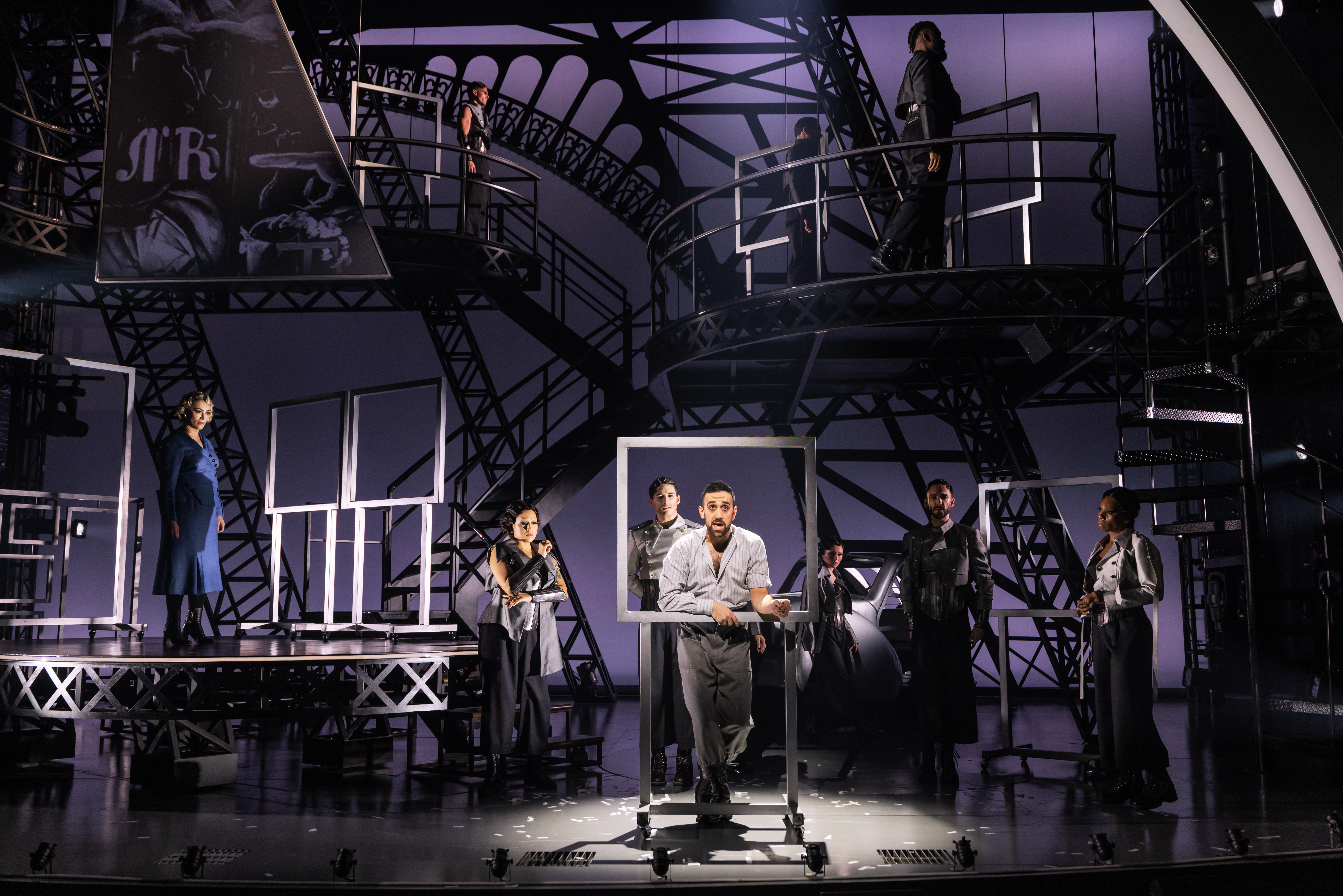
(© Matthew Murphy/Evan Zimmerman)




